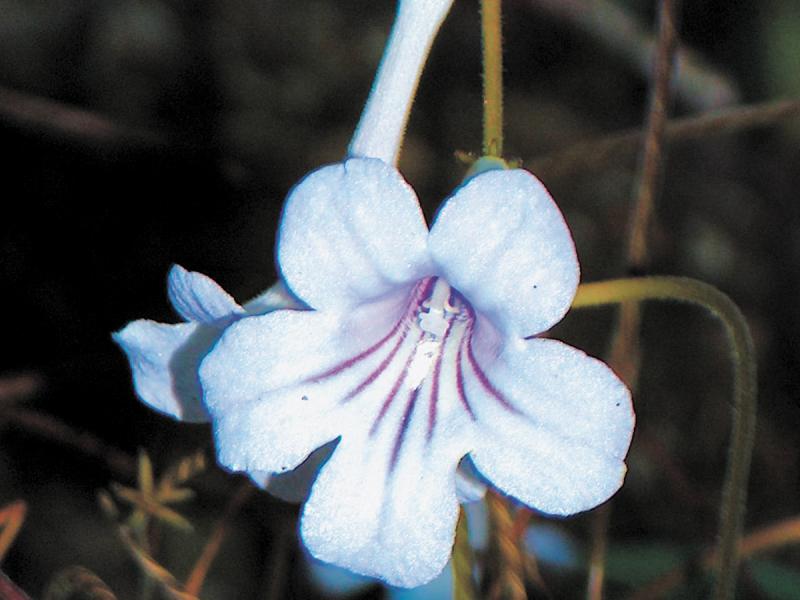They call her Eve because she is one of the first women. Her footprint shows her feet would wear about a size 7 1/2, and she probably stood 5-foot-3-inches to 5-foot-4-inches tall. A gentleman never asks a woman her age, but Eve's footprints are approximately 117,000 years old. The fossilized footprints are in the Cape area of South Africa. There is even evidence she used natural clay ochre as a colorful cosmetic.
There is also a wonderful, colorful plant from the Cape area of South Africa. This easy-to-grow houseplant will make its own footprint in our home.
The Cape Primrose, also called Streptocarpus, has soft, velvety leaves with trumpet-shaped, orchid-like flowers that bloom above the foliage. The five-petaled flowers come in shades of blue, purple, violet, pink and white. Best of all, they can bloom up to 10 months a year, and easily bloom in low light. Indeed, in their native habitat they grow in the shaded forest floor, so they not only do well with low light, but with regular bouts of dryness.
Place your Cape Primrose (Streptocarpus x hibridus) where it will get some light but never direct, hot sunlight. A north-facing or west-facing window is great. Healthy leaves will be a deep forest green; if the leaves are yellow or light green, they are probably getting too much sun.
These plants seem to thrive on neglect. Only water them when the top inch or two of soil is dry to the touch. They can even wilt with little or no permanent damage.
Like their cousins, the African violets (Saintpaulia hybrids), a little drought does these plants no harm. Soak the soil thoroughly when watering, and be careful so the leaves do not get wet. Use lukewarm water. These hardy flowering plants do well in average house temperatures between 60˙F and 70s. They do not do well in very high temperatures.
When the plants are actively growing from spring through late summer, fertilize with a liquid houseplant fertilizer diluted to half strength every three or four weeks. Choose a fertilizer made especially for blooming plants, one that is high in phosphorus (such as 15-30-15). Do not fertilize during the winter months, when Cape Primroses are not actively growing.
From time to time, It is a good idea to soak the soil, and let the water run out of the bottom of the pot. This leaching flushes out built-up salt levels from the fertilizer. If the leaves look browned or burned, it is a sign of too much fertilizer. To keep your Cape Primroses tidy, cut off any leaves that have faded or yellowed.
When your plants are getting crowded, you should repot them in the spring into a slightly larger pot. To propagate Cape Primroses, take leaf cuttings, which will easily root. They are also easy to grow from seeds. Sprinkle the tiny seeds onto the surface of the soil but do not cover them. Cover the pot with clear plastic to keep humidity high. Seed-grown plants will bloom in just six to seven months after sowing.
Grow the South African Cape Primrose, and your indoor garden will literally follow the footsteps of ancient Eve. But it won't take 117,000 years before they are noticed.























































